Logistics
Industries
Technology & Innovations
E-commerce
E-commerce Fulfillment Services
Lease & Maintenance
Semi Trucks
Logistics
E-commerce
Lease & Maintenance
Buy Used Trucks
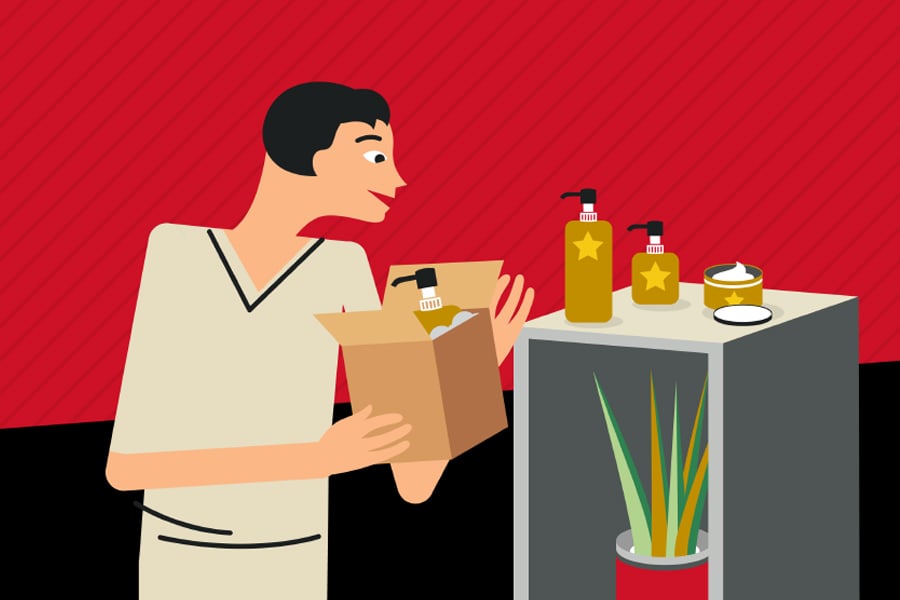
When we think about marketing, it’s easy to get caught up in the excitement of new customers, new leads, and new sales. All things ‘new’ can be incredibly addictive for both up-and-coming and established e-commerce brands. But, this focus on the ‘new’ misses an essential part of the equation - repeat customers.
Did you know that returning customers are 50% more likely to try new products and 31% more likely to spend more on their average order value with your brand? In other words, loyal customers who shop with you again and again have the power to keep your business going strong.
So, how can e-commerce brands make sure they’re not only acquiring new customers, but also engaging and satisfying them enough to develop lasting relationships?
We have good news: there’s a way to keep existing customers happy and boost repeat purchases – it’s called retention marketing.
Before we dive in, let's take a few steps back and explore the customer journey.
The customer journey is the process a new customer goes through when searching for, purchasing from, and engaging with a merchant. It consists of several steps:
The first three steps of the journey involve a focus on customer acquisition, a marketing strategy to attract and nurture new customers and leads. Content marketing, email marketing, social media advertising, promotions, and more are all strategies to assist with acquisition and nurturing customers into making a purchasing decision.
Once a consumer has made a purchase, the focus changes from getting them interested to keeping them interested. This is the definition of retention marketing - a marketing strategy with the focus of developing strong connections with existing members and encouraging them to purchase repeatedly from your brand.
Developing a successful retention marketing strategy isn't just a nice-to-have for e-commerce brands; it's essential for building a sustainable business. Let's dive in:
While acquiring new customers should always be a focus within your marketing strategy, it’s expensive! In fact, acquiring customers costs 5x more than keeping existing ones.
Why? The nature of customer acquisition involves constant outreach and customer engagement in the form of paid ads, campaigns, events, boosted content, and more - all of which can be extremely costly to maintain.
When your focus shifts from prospective customer outreach to existing customer outreach via customer retention marketing, there won't be as many resources needed to convince or engage customers due to the fact that they already trusted your brand enough to make a previous purchase.
It’s not rocket science! Every time someone from your customer base makes a repeat purchase, the likelihood of them returning to your brand increases - simply because they are satisfied with your products while developing a relationship and connection with your brand.
In sum, returning customers get to skip those first few steps of the customer journey. Instead of researching and comparing merchants, all that's left to do is find a product and click “buy now”
Pro tip: Make it even easier for your existing customers to keep buying from your store by allowing them to create an account where they can save their shipping and billing information for the future.
You heard that right - repeat customers spend more and boost profits. To be specific, they spend a whopping 67% more than new customers. How? Because over time, repeat customers develop high levels of brand trust, making them extremely valuable to e-commerce stores.
It’s much easier to spend more money in places you have already spent money - with shopping and customer service experience under your belt with that particular brand, gone is any hesitation around purchasing (so long as it’s a good experience!)
Repeat customers are like your low-maintenance friends: they just get you!
Picture this: a group of friends are chatting over brunch about an upcoming wedding and what they’re going to wear. One friend can’t stop raving about your brand because you offered free, faster shipping - AND a generous returns policy.
In just a few minutes, you have an entirely new group of prospective customers - without having to pay for digital ad space or clicks. Sounds too good to be true, right?
This is called word-of-mouth marketing, and it’s one of the best ways to influence organic discussions about your brand and attract more customers.
In fact, a study by Nielsen found that 92% of consumers believe suggestions from friends and family more than advertisements. And who is facilitating these discussions? Your loyal customers, of course!
Long story short: when you have happy customers, they turn into brand advocates.
Let's say you had 1000 customers on January 1st and had acquired 500 more by February 1st. But you also lost 300 customers during that same time period. This leaves you with 1200 customers. Your Customer Retention Rate calculation would be:
CRR = (1200 - 500) / 1000 x 100 = 70%
In this case, your CRR would be 70%.
Customer churn rate tracks any consumers who become active members of a brand and then leave the brand after a certain amount of time.
To calculate your customer churn rate, you need to know the total number of customers you had at the beginning of a set time period vs. the number you lost at the end of that time period. Simply divide the number of customers lost by the total number of customers and multiply by 100 to find your churn rate.
If you started with 5000 customers and lost 450 customers after six months, your churn rate would be 9%.
It's important to be aware that there are different types of customer churn that you need to be aware of. Some you have the ability to mitigate, while others are a lot harder to influence:
Customer Lifetime Value (CLV) is one of the most important metrics to measure in e-commerce. It estimates the amount of business your brand can expect from a single customer throughout their patronage of your brand.
One of the greatest things about CLV is that your customer support efforts will directly influence this figure. Account managers, customer service representatives, and loyalty reward programs will help develop your relationship with customers, making them more likely to continue buying from your brand.
To calculate CLV, you’ll need to determine customer value (average purchase value X average number of purchases) and multiply that number by the average customer lifespan.
If the average customer shops with your brand four times a year for three years and spends an average of $50 each time, your calculation would be:
CLV = ($50 x 4) x 3 = $600
If you’re ever seen the question “How likely is it that you would recommend [brand] to a friend or colleague?” on a scale of 0-10, you’ve witnessed the NPS metric in action. Your rating will place you in either the Promoter, Passive, or Detractor group.
To calculate your score, subtract the percentage of detractors from the percentage of promoters. For example, if 50% of your customers are promoters, and 5% are detractors, your NPS score is 45.
Sending out an NPS survey not only helps your brand determine customer satisfaction, it also gives you the opportunity to connect with those who are unhappy and get feedback on how you can improve.
In order to create the most influential lifecycle marketing strategy that results in engaged consumers, high purchase frequency, and more returning customers - you'll need to develop unique retention marketing efforts and continuously ask yourself questions about your customer relationships.
If all of your marketing budget goes into acquisition, you may be seeing bursts of new customers - but are they staying over time? In order to get repeat customers, you’ll have to strike a balance between your customer acquisition and customer retention marketing strategy.
Existing customers can get lost along the way if you're ignoring retention marketing. Simple steps like engagement emails, surveys, and frontline customer service reps are key ways to create more touchpoints and create a positive customer experience.
The post-purchase phase is one of the most influential periods of a customer’s journey because it helps assure brand trust. First-time buyers will be in a state of excitement and anticipation after confirming their purchase - and if all goes smoothly, they'll be more likely to purchase again!
Did your customers receive a confirmation email and estimated delivery date? Are they able to track their package with a simple email link? Can they edit or cancel their order? Making sure all of these simple (yet extremely important) details are addressed will ensure the best experience for your customers.
Now that a customer has purchased your product, your job is done - right? Not exactly! Even consumers who’ve purchased from your brand need a bit of motivation to check out other products or come back for more.
Offering a brand loyalty program, access to occasional promo codes, or early access to new products is a great way of incentivizing repeat purchasing behaviors. Plus, it never hurts to follow up and ask for feedback. Feedback helps your community feel seen, and it's some of the most valuable customer data you can gather when improving your customer retention.
Email marketing is one of the most effective retention marketing strategies, as it provides a plethora of ways to communicate with existing consumers. From promotions to product suggestions to the onboarding process, personalized emails are the key to satisfied customers and a seamless purchasing experience.
For example, when you sign up for a LinkedIn Premium membership, you'll receive an email with premium perks and direct links to access - no hassle of having to figure it out on your own.
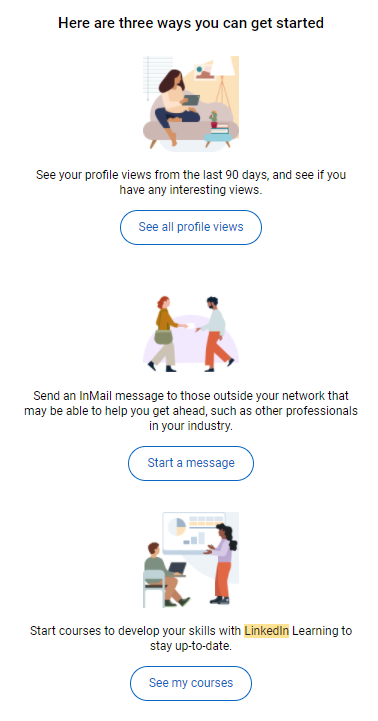
Let's be honest - we all love a good promo code. It feels like an unexpected gift! Offering personalized discounts turns hesitant customers into confident ones, and it might be exactly what they need to make that purchase.
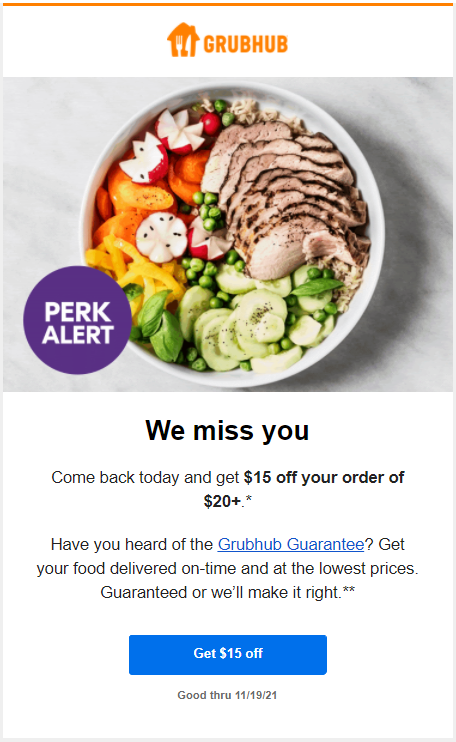
Like the GrubHub example above, email marketing can be used to re-engage customers who haven't purchased in a while.
Pro-tip: adding an expiration date to a promotion creates buyer urgency, encouraging your customers to make a move sooner rather than later.
User-generated content builds your brand, provides social proof, and creates an online community, making it less attractive for your customers to leave. Creating a brand ambassador program, like American Eagle's #AerieREAL program below, is one example of retention marketing tactics that incentivize user-generated content with fun hashtags and perks.

Loyalty programs benefits engaged customers directly. If they sign-up for a loyalty program, they can quickly begin partaking in different activities that earn them perks, in turn influencing their shopping behavior.
Urban Outfitters offers a points program, where customers can earn a set amount of points by doing simple things like following the brand on social media. For every 100 points, consumers will get a $5 reward.
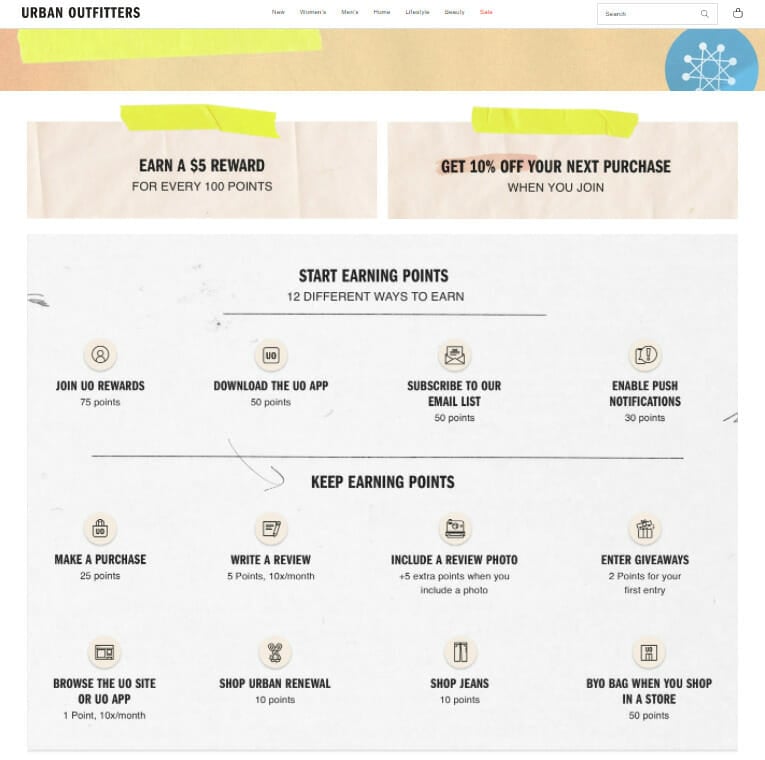
In addition to points programs, there are also paid loyalty programs that offer exclusive benefits in exchange for a recurring monthly or yearly fee. While it may raise some eyebrows about paying extra for services, these types of loyalty programs work.
The most popular in recent times? Amazon Prime.
Fulfillment marketing examples include branded packaging, thank you notes, marketing inserts, and more. Basically, fulfillment marketing is a strategic unboxing experience - and it goes hand-in-hand with customer retention strategies.
Adding personal touches to unboxing like using the customer name in packaging or listing your social handles encourages more engagement, customer loyalty, and an overall positive experience.
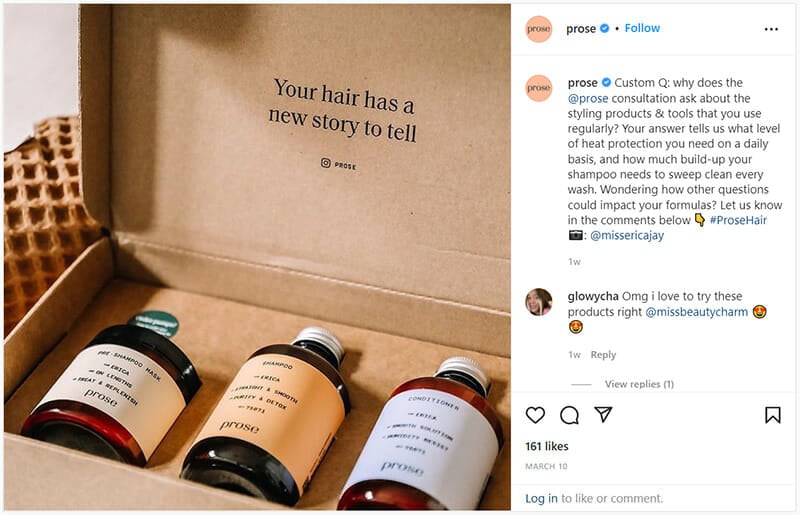
While acquisition marketing will always be essential for creating a successful business in the digital age, building a powerful retention marketing strategy is more important than ever before.
Why? Because the ability to acquire a new customer is only half the battle. Getting these same customers to make repeat purchases is the other half - and it takes thought, energy, and effort. Finding the balance between acquisition and retention marketing campaigns is essential in providing the most seamless, engaging lifecycle for your customers.